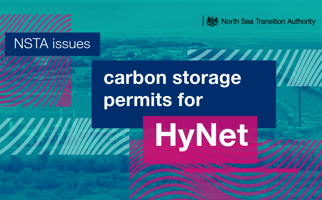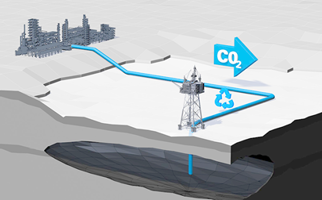
The Oil & Gas Authority (OGA) welcomes the announcement by Cnooc of the significant Glengorm discovery in the Central North Sea of the UK Continental Shelf (UKCS).
OGA Chief Executive Dr Andy Samuel said: “This is very exciting news; Glengorm was first mapped as a prospect around 20 years ago and it is great to see Cnooc taking up the exploration opportunity and completing a difficult high-pressure, high-temperature exploration well. Initial results show that Glengorm could be one of the biggest finds in the UKCS in recent years, possibly the biggest since the Culzean gas field was discovered eleven years ago.”
“This underlines the considerable potential of the UKCS. Our official estimate is that there still remains between 10 and 20 billion barrels plus to be recovered, so there is every chance of yet more significant finds, provided industry can increase exploration drilling and capitalise on the real value to be had here in the UK.”
Since the OGA was established, it has placed a significant focus on exploration; the ‘lifeblood’ of the basin. This includes: commissioning new government-funded seismic surveys to acquire new geophysical data; overhauling the licensing regime to make it more flexible with lower entry barriers; establishing annual licensing rounds focusing alternately on mature and frontier areas; and making high quality seismic, wells, geological mapping, reports and lessons-learned information openly available to all. The OGA will also be taking on ownership of the new National Data Repository in February 2019, which will for the first-time open-up the UKCS’s released subsurface data to the public.
Through these efforts, the OGA has been supporting a recovery in the wider exploration scene. The global oil price crash led to exploration budgets around the world being roughly halved since 2014; impacting on drilling activity and leading to reductions in many companies’ exploration team size and experience. In the UKCS, the number of exploration wells being drilled has been in decline; with just seven wells being drilled in 2018 compared to 13 in 2014.
However, despite fewer wells being drilled, the volume being discovered in the UK has (provisionally) more than doubled over the same period; from 83 million barrels of oil equivalent (boe) in 2014 to 175 million in 2017.
In addition, the costs associated with finding these volumes have dropped dramatically – from an average of $9 per barrel in 2014 to just over $1 per barrel in 2018.
The OGA has also been assisting focused ‘infrastructure-led’ exploration and Apache’s Garten field, recently tied back to Beryl Alpha, which went from discovery to first oil in just eight months.
On the UKCS, around 43% of exploration wells drilled are potentially commercial, compared with the global average of around 36%.
Now with industry acquiring three times as much seismic data in 2018, compared to the previous two years, the OGA expects a healthier exploration outlook. The OGA is calling on industry to take advantage of what the UKCS has to offer, which should lead to an upturn in drilling activity, with around 18 exploration wells and 19 appraisal wells potentially to be drilled across the basin this year.
OGA Head of Exploration & New Ventures, Dr Nick Richardson said: “The North Sea has proven once again that it is a world-class petroleum basin, and its exploration history is a long way from being over. Those companies that have a bullish attitude and have kept the faith in the UK’s oil and gas sector’s fundamentals will continue to reap the rewards that others have missed.
“If industry can intensify its exploration activity by maturing prospects through sound technical evaluations to active drilling, whilst maintaining the UKs now world-class technical success rates and low finding costs, it will deliver increased value from the significant remaining potential in the basin.
“The UKCS has a diverse set of opportunities: from play-opening high-impact targets; to small, high-value, near-field opportunities; to undeveloped discoveries. This diversity accommodates a range of company strategies, and allows investors in the UKCS to build a balanced portfolio within a stable regulatory and fiscal regime.
“The OGA will continue to sustain an environment which makes exploration as attractive as possible; supporting industry’s efforts through flexible licensing, providing huge quantities of publicly-available subsurface data and supporting technical stewardship to assist companies with their well-planning performance.
“Now we’re really looking to industry to grab the opportunity and explore.”
Ends


